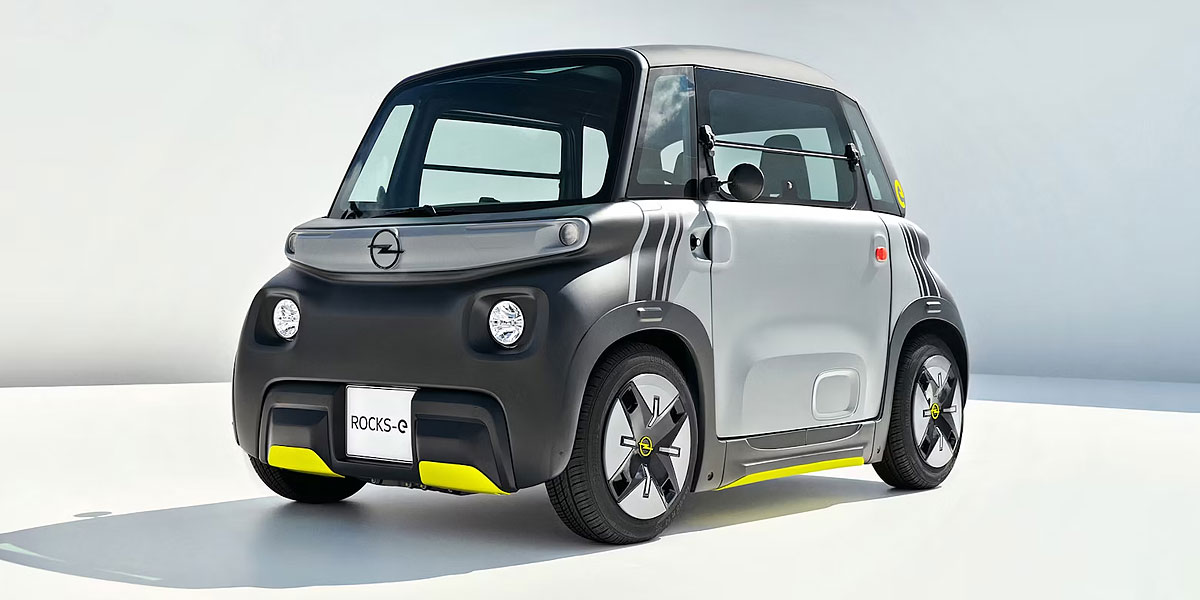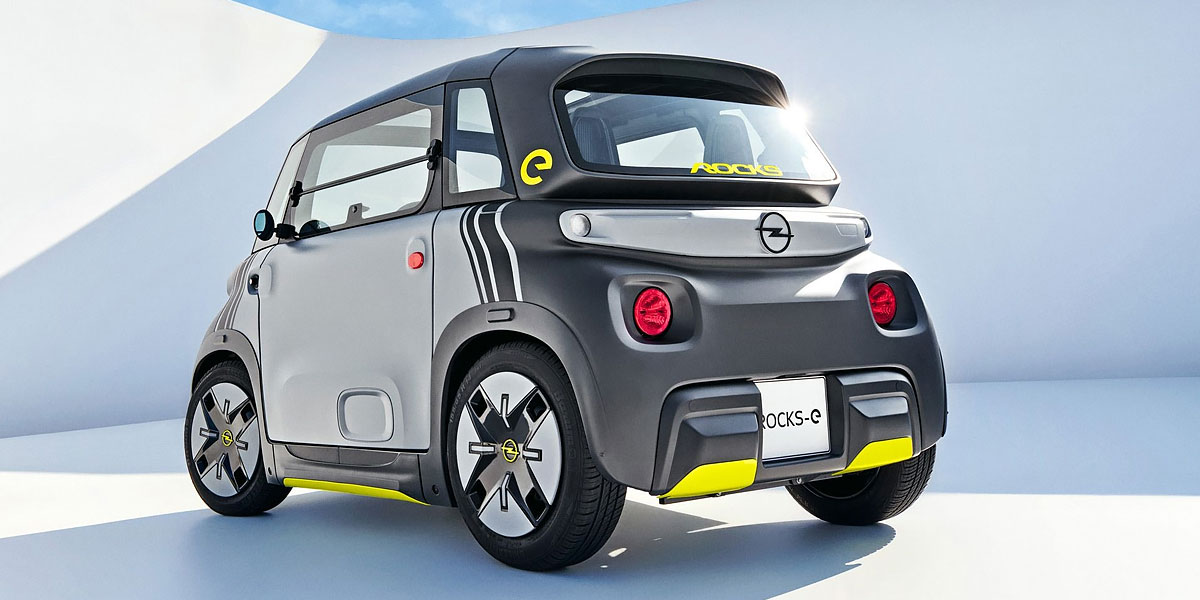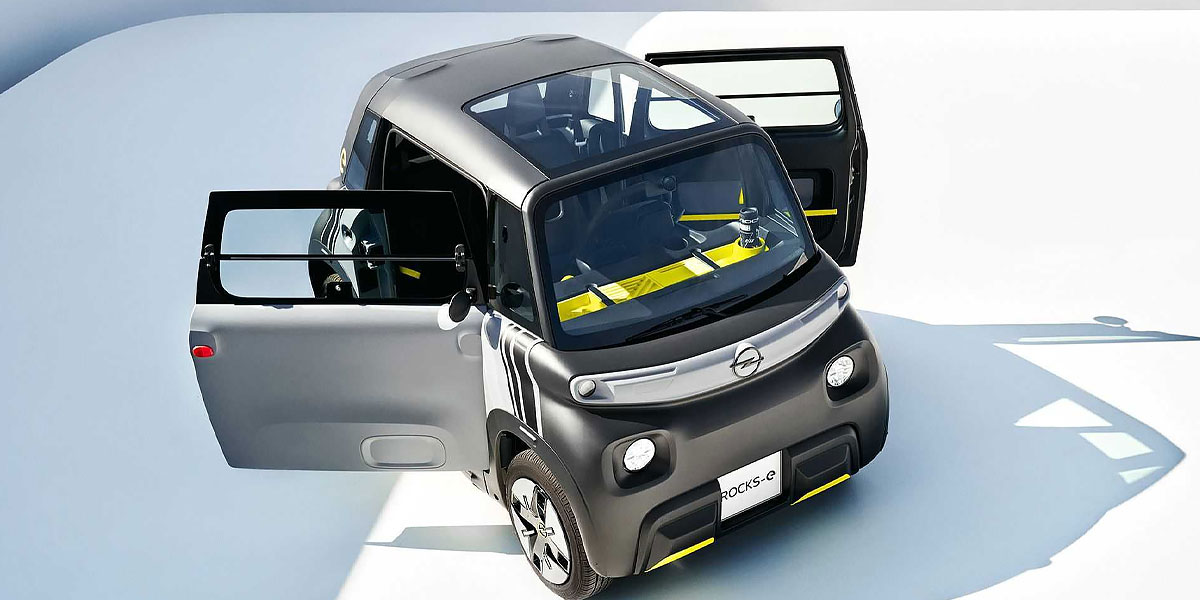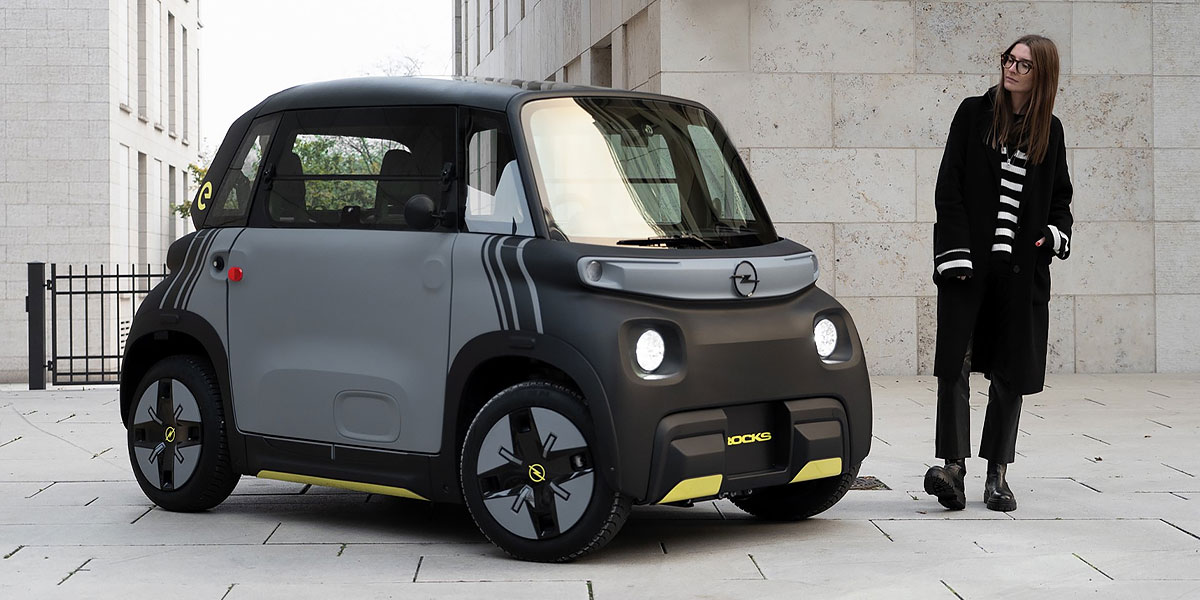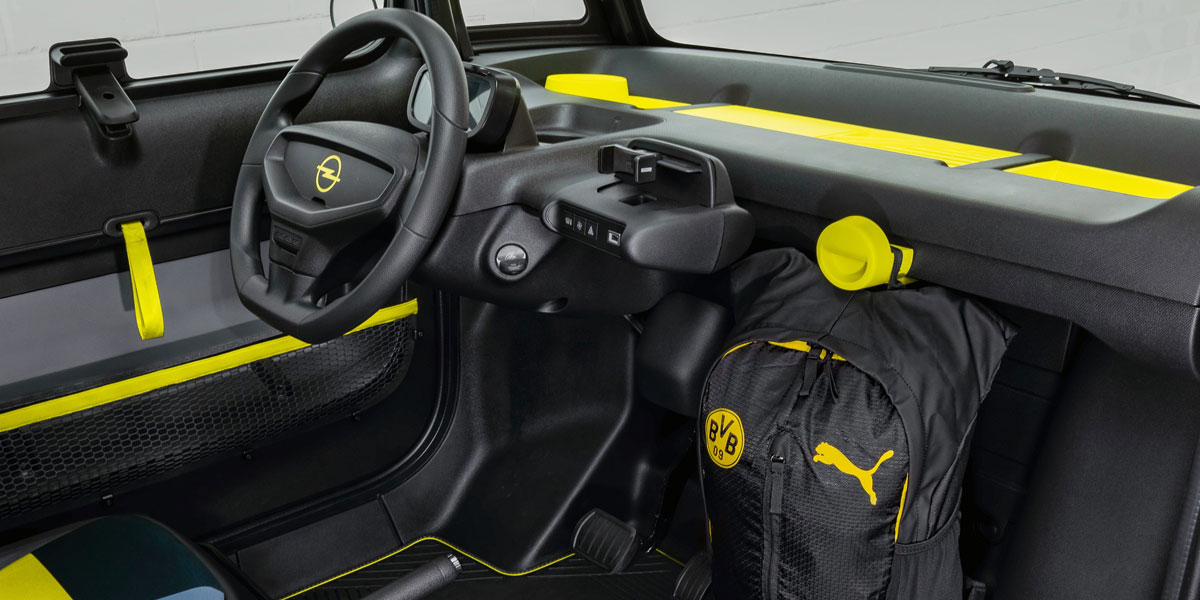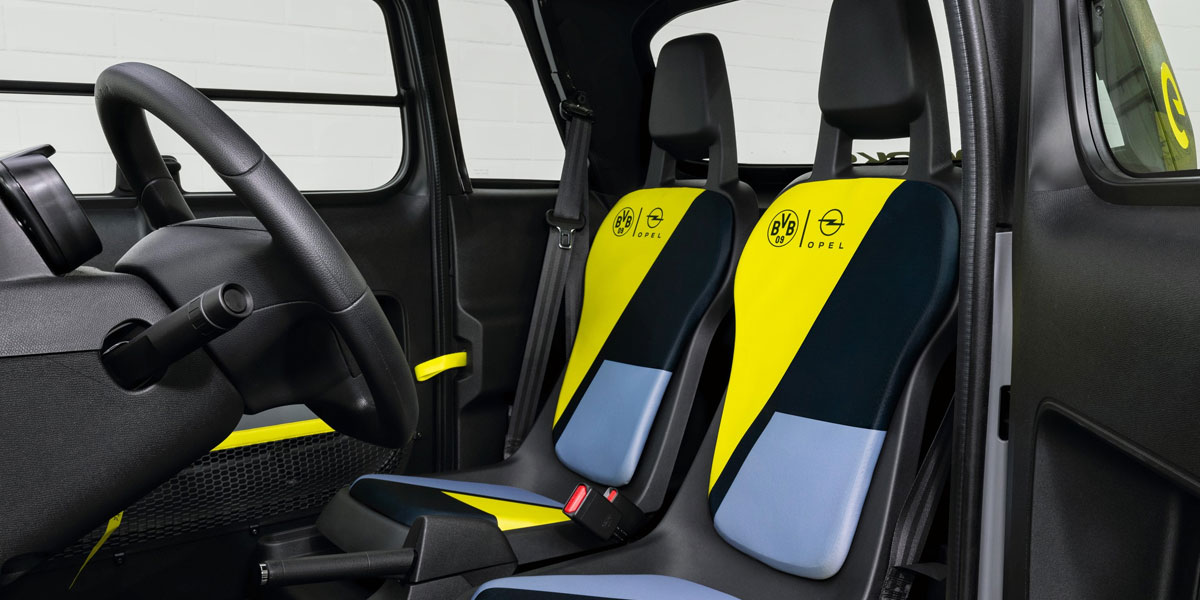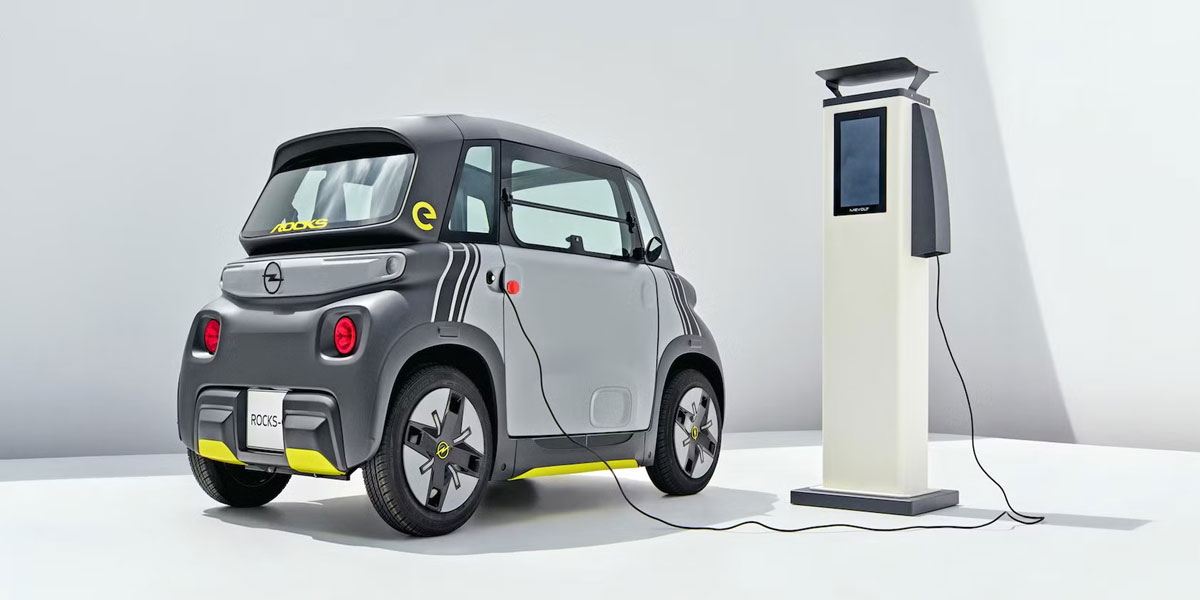Opel Rocks-e
User Rating: 4.08 / 5





What is the Opel Rocks-e?
The Opel Rocks-e is a 2024 light electric vehicle with a 5.5 kWh battery, 75 km (47 mi) range, and 45 km/h (28 mph) top speed. Priced at $8,499 (€7,860 / £6,700), it’s ideal for city driving and teens with AM licenses.
Opel Rocks-e price:
US$ 8499 *
| manufactured in | Germany |
| model year | 2024 |
| electric range (km) | 75 |
| battery (kWh) | 5.5 |
| max. speed (km/h) | 45 |
| power (h.p.) | 12 |
| car type | coupe |
| drive type | RWD |
* Minimum price set by the manufacturer, excluding taxes and additional options
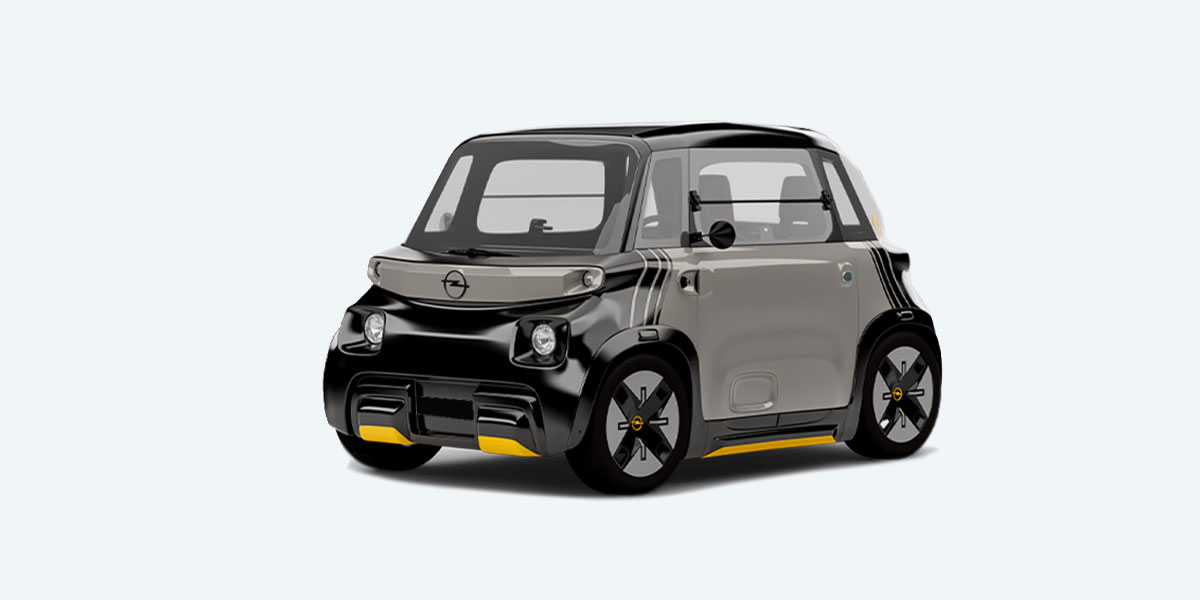
Exterior and Interior photos of Opel Rocks-e
Opel Rocks-e Review
Opel Rocks-e 2024: Germany’s Electric Cube for City Streets
The Opel Rocks-e 2024 rolls into the urban EV scene like a charming little oddball—equal parts mobility pod and city-smart solution. Priced at just $8,499 (around €7,860 / £6,700), this German-made electric quadricycle doesn’t pretend to be a car—it embraces minimalism, practicality, and charm to deliver short-range, low-speed, zero-emission commuting to a new generation of drivers. Classified as a light quadricycle (L6e), it’s legally operable by 15-year-olds in much of Europe, making it an ideal candidate for urban youth, college students, or those ditching mopeds and scooters for something with a roof and doors.
- Manufactured in Germany and launched in 2024, the Opel Rocks-e rides on the bones of the Citroën Ami platform.
- Its quirky symmetrical design helps reduce manufacturing costs and gives it unmistakable street presence.
- Priced at $8,499 (€7,860 / £6,700), it sits far below even the cheapest full-size EVs or hybrids on the market.
- Built for urban efficiency and accessibility, it bridges the gap between e-scooters and electric cars.
Opel Rocks-e Specs: Battery and Performance Breakdown
Battery Details
This pint-sized electric vehicle packs a 5.5 kWh lithium-ion battery—enough for a WLTP-rated range of 75 km (47 mi). In the real world, you’re more likely to see 60 to 65 km (37–40 mi), depending on your speed and ambient temperature. Charging is dead simple: it plugs into a standard household outlet and tops up fully in 3.5 to 4 hours. No charging stations needed. The integrated 3-meter cable cleverly hides in the passenger door, making it easy to charge anywhere you find a plug.
- Battery capacity: 5.5 kWh
- Range: 75 km (47 mi) WLTP
- Real-world range: 60–65 km (37–40 mi)
- Charging: 3.5–4 hours via 230V home outlet
- Charging cable: 3 meters, integrated in door
Performance Capabilities
With just 12 horsepower (9 kW peak), the Rocks-e isn’t going to snap your neck back—but that’s the point. Top speed is limited to 45 km/h (28 mph), which keeps it street-legal for young drivers under quadricycle laws. Acceleration is gentle, reaching max speed in about 10 seconds, and it drives the rear wheels with all-electric smoothness. The ultra-tight 7.2-meter turning radius makes navigating alleyways and busy intersections a cinch, while the ride is admittedly stiff—blame the rudimentary suspension and short wheelbase.
- Power: 12 hp (9 kW peak)
- Acceleration: 0–45 km/h in approx. 10 sec
- Top speed: 45 km/h (28 mph)
- Drive type: Rear-Wheel Drive (RWD)
- Turning radius: 7.2 meters
Built for dense traffic and short hops, the Rocks-e ditches top-end speed for daily city usefulness. No license? No problem—just check local AM license rules.
Exterior and Interior of the Opel Rocks-e
Exterior
Looking like a rolling Lego brick, the Opel Rocks-e draws stares with its cube-like form, identical front and rear panels, and funky double-hinged doors—rear-hinged on the driver’s side, front-hinged on the passenger. It measures just 2.41 meters long, letting you park it sideways in tight European cities. Options like the TeKno trim bring LED lighting, neon accents, and a glass panoramic roof for an extra splash of personality. It’s not glamorous—but it sure is functional.
Interior
Spartan is the name of the game inside. Offset seating offers surprising space for two, with enough legroom for a 6’2" driver. There’s no infotainment screen—instead, a smartphone dock does the job, powered via USB-A. Creature comforts? You get a defroster, a fan, and a panoramic roof. That’s it. But it’s cleverly laid out, with 63 liters of front footwell storage, door nets, and a hook for bags. The Klub and TeKno trims add Bluetooth and style upgrades if you want a bit more flair.
Pros and Cons of the Opel Rocks-e
Pros
- Ultra-affordable EV at just $8,499
- Can be driven by 15-year-olds in some regions
- Fits in the smallest parking spots
- Easy charging via regular household plug
- Charming design with customizable trims
Cons
- Very limited speed and range
- No airbags or traditional crash safety
- No A/C, minimal comfort features
- Ride can be bumpy on uneven roads
Conclusion: Opel Rocks-e for City Life in 2024
The Opel Rocks-e won’t win drag races or climb mountains—but it’s a smart, fun, and ultra-cheap way to beat city congestion. For $8,499 (€7,860 / £6,700), you get electric transport with real-world charm, perfect for short hops and tight spaces.
Manufacturer: OPEL
Related Video
Comparison:
When micro-EVs go head-to-head, the Opel Rocks-e stands as the quirky contender against the Citroën Ami, Renault Twizy, Microlino, and Silence S04. All aim to redefine city transport, but the Rocks-e does it with a budget-first mindset and street-ready charm.
Range Comparison
The Opel Rocks-e clocks in at 75 km (47 mi) WLTP, edging out the Twizy 45 (60 km / 37 mi) and matching the Ami at 75 km. The Microlino wins this round with a max 177 km (110 mi) depending on the battery, while the Silence S04 offers 149 km (93 mi).
Acceleration Comparison
Most micro-EVs like the Rocks-e and Ami don’t emphasize speed. The Rocks-e hits 45 km/h (28 mph) in about 10 seconds, similar to the Ami and Twizy 45. The Microlino accelerates faster with higher top speeds in premium versions.
Power Output Comparison
The Opel Rocks-e provides 12 hp, nearly identical to the Ami. The Twizy 45 and Silence S04 each offer around 5–9 hp depending on configuration, while the top-spec Microlino bumps up to 17 hp.
Charging Time Comparison
All of these EVs—including the Rocks-e—can be charged using a standard household outlet. The Rocks-e completes charging in under 4 hours, which matches the Ami and outpaces the Twizy and Silence S04 with longer charge times depending on battery size.
Price Comparison
The Opel Rocks-e, at $8,499 (€7,860 / £6,700), is among the most affordable. The Citroën Ami hovers around €7,990, while the Twizy exceeds €11,000. Microlino and Silence S04 both start above €13,000—more than 50% pricier than the Rocks-e.
F.A.Q.:
What is the range on a single charge?
The Opel Rocks-e delivers up to 75 km (47 miles) on a full charge, with real-world results typically around 60–65 km (37–40 miles).
How fast does it accelerate?
It reaches its top speed of 45 km/h (28 mph) in about 10 seconds, which is quick enough for city and suburban routes.
What is the top speed?
The top speed is limited to 45 km/h (28 mph), allowing it to comply with L6e quadricycle regulations in the EU.
How much power does it produce?
The electric motor delivers 12 horsepower (9 kW peak), optimized for urban efficiency rather than performance.
What is the battery capacity?
It features a compact 5.5 kWh lithium-ion battery, suitable for short commutes and daily errands.
How long does it take to charge?
Charging takes about 3.5–4 hours via a standard 230V household outlet using the integrated 3-meter cable.
Who can drive the vehicle?
In many European countries, 15-year-olds can drive the Opel Rocks-e with an AM category moped license.
How much does it cost?
The Opel Rocks-e starts at $8,499, which is roughly €7,860 or £6,700 depending on the region.
What features are included inside?
Basic features include a panoramic glass roof, smartphone holder, USB-A charging, manual climate controls, and offset seating.
Is it safe to drive?
As a quadricycle, it lacks features like airbags or ABS and is best suited for low-speed urban environments.

